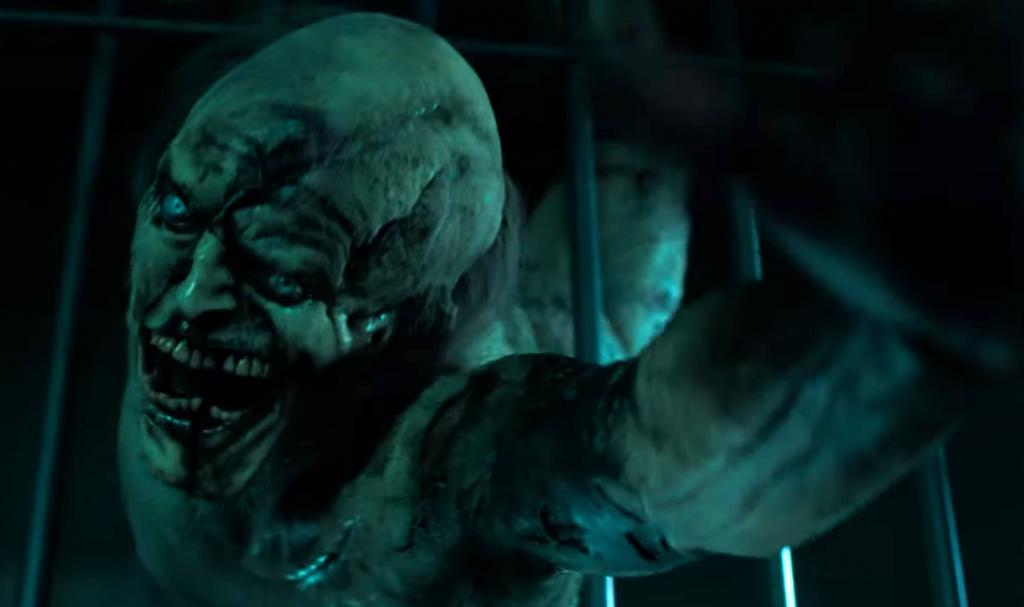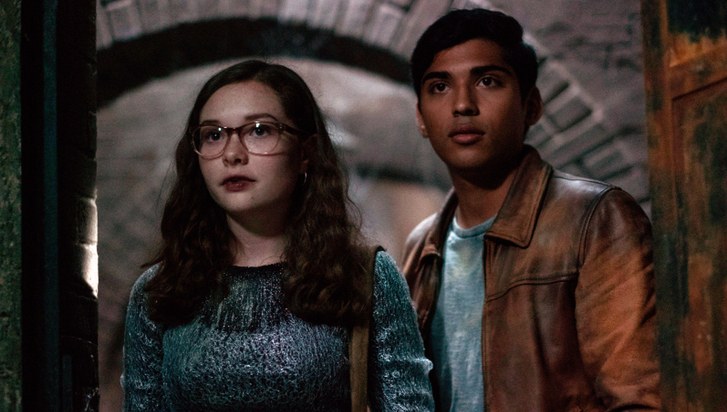The horror genre has had a healthy revitalization over the last few years, anchored by the likes of James Wan’s Conjuring franchise or the current indulgence of Stephen King properties, particularly both IT films. So much so, that there really is a horror film for everyone, many exhibiting a firm grasp on their own identity. Want an arthouse Swedish folk tale? Ari Aster’s Midsommar (2019) should give you plenty of nightmares. Or perhaps a tense home invasion film like Don’t Breathe (2016)? Conversely, a number of horror-flavoured films are designed with a younger audience in mind, namely the recent Goosebumps films.
This brings us to Scary Stories to Tell in the Dark, an adaptation of the children’s book series of the same name by Alvin Schwartz and Stephen Gammell. Now, this may be due to my own ignorance, but I was completely unaware of the book series before seeing the film. I understand that the books have a considerable following in the United States, where many Americans grew up reading them in school. But to my knowledge the series never made much of an impact in Australian schools, so I never came into contact with them growing up.
André Øvredal directed this adaptation, (his horror film The Autopsy of Jane Doe (2016) is well worth your attention), opting to string a narrative through a selection of the short horror stories collected in the books. These stories range from a zombie missing a big toe to the Jangly Man, a creature whose body acts as a walking jigsaw puzzle.
Scary Stories to Tell in the Dark is set in 1968, on the cusp of Nixon-era politics and the foreboding presence of the Vietnam War.
On Halloween night, four friends living in a small town, Stella, Ramón, Auggie and Chuck stumble upon a haunted mansion, where they recover a book of horror stories written by Sarah Bellows, a cursed soul who was locked away by her family. Sarah’s only solace was in writing horror stories, stories which had the power to come to life, often feeding on the fear of different townsfolk.
Our four leads quickly discover that taking the book was not the best idea, as the spirit of Sarah Bellows uses the book to write stories around their demise. And so, it is up to these four kids to defeat Sarah Bellows before they are all taken by ghoulish forces.
On that summary alone, you’d be forgiven for thinking that Scary Stories is essentially a re-tread of Goosebumps (2015), and that’s because it more or less is just that. This is PG-13 (M-Rated) bloodless horror, designed to get younger viewers into the horror genre. It’s edgier than Goosebumps, with an abundance of jump scares and moody lighting, albeit coupled with a heaping of hit-or-miss goofy humour.
Many of your horror archetypes and clichés are present here as well, from jocks and final girls to town elders with a connection to said town’s troubled past.
Scary Stories is a film with a bit of an identity crisis, as it aims to be a slightly older alternative to Goosebumps (2015)without quite being as intense and bloody as IT (2017). Each of the scares in the film features a unique monster from the books, which have been faithfully recreated from their illustrations. Monsters like the Pale Lady are absolutely terrifying to behold thanks to the focus on practical moulds and effects from producer Guillermo Del Toro. As a result, the practically created monsters in the film wind up being the most memorable, with each appearing as if they’d walked out of Pan’s Labyrinth (2006). Other monsters like the Jangly Man are created with CGI however. The low-budget, computer generated monsters certainly get the job done, unfortunately they just lack the tangible realism that make monsters like the Pale Lady so unnerving to look at it.
Many shots in the film linger heavily on these monsters, giving us ample time to take in the exaggerated creature designs. While this works wonders for the practical monsters, the CG creations come across goofy and fake. Losing any real sense of threat when the film spends too much time on them.
It also helps that you care about the characters in these scenarios, as the anticipation and anxiety of the impending scare comes partly from your investment in the character experiencing the horror. While the child actors do a pretty good job with the material they’re given, displaying plenty of range, the characters are all ultimately pretty weak and underdeveloped.

Dean Norris from Breaking Bad appears very briefly as Stella’s father but is completely underutilized, in a role that feels unnecessary.
Scenes not involving scares, often involve these rather dull characters, explaining at length, the history of the town and book to the viewers, often killing the pace of the film. If more time was spent on character-building scenes, then these moments of heavy exposition, would’ve been a little more bearable to sit through, as we saw IT (2017) manage and balance fairly well. As a result, the ending that Scary Stories builds to, ultimately feels unearned and rushed.
Goofy humour is attempted to liven things up, with Chuck acting as designated comic-relief but it mostly falls flat, making it all feel like your average Nickelodeon program.
Stella and Ramón are the only characters to see much attention given to them in terms of backstory, where Ramón in particular sees some interesting development that acts as some light social commentary on the Vietnam War.
Outside of Stella and Ramón, any drama in the film is all rather rudimentary and feels like filler before the next scare ramps up.
The thing is, Scary Stories relies heavily on jump scares for much of its run-time as well. Now, complaining about jump scares in a horror film, may feel like a naught point, but it all comes down to the execution of said jump scares. The best jump scares act as pay-off to ample suspense and atmospheric build-up. The airduct scene in Alien (1979) for example, is a masterclass in effective jump scare construction.
While Scary Stories has some clever build-up and shot construction in the third act, much of the film feels like it’s built around these jump scares. Scenes slowly tease the reveal of a monster, followed by a very loud jump scare sound, and the film more or less, rinses and repeats this method for the rest of the movie.
What holds Scary Stories back from effectively using this tried-and-true formula, is that there isn’t any investment in these characters, and the PG-13 payoff for these scares, often leans into being goofy rather than truly terrifying. There isn’t any anxiety felt when these characters are in these horrific scenarios.
Instead, I found myself anticipating the next loud noise, rather than anxiously waiting to see what would happen to these kids. Both IT movies use this exact formula, difference is we care about what happens to the Loser’s Club, and the jump scares are far more effectively constructed with rewarding payoff.
Scary Stories to Tell in the Dark is a disappointment. It’s a film that’s oozing with potential but doesn’t quite know how to fully utilize what’s on hand. Not enough time is spent developing the characters to make them feel like an Amblin era throwback, while older viewers who aren’t nostalgic for the books, are likely to favour the antics of the Loser’s Club instead. Teens may discover Scary Stories as a go-to on Halloween nights, but outside of that potential demographic, the identity of this film feels at odds with its influences, especially as these stories seem prime for episodic storytelling like The Haunting of Hill House.
If you’re a fan of the books, I’m sure there’ll be a nostalgic quality in seeing some of these stories come to life on the big screen, but if you’re unfamiliar with the source material, I’d recommend waiting for Scary Stories to Tell in the Dark to show-up on Netflix.
Director: André Øvredal
Cast: Zoe Margaret Colletti, Michael Garza, Dean Norris
Writers: Dan Hageman, Kevin Hageman, Guillermo del Toro, (story by Marcus Dunstan, Patrick Melton, based on a book by Alvin Schwartz)



